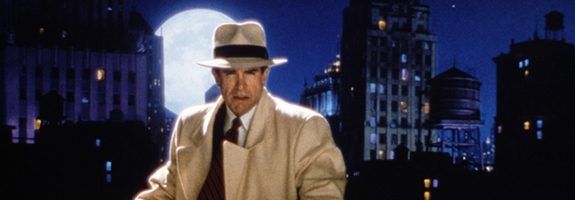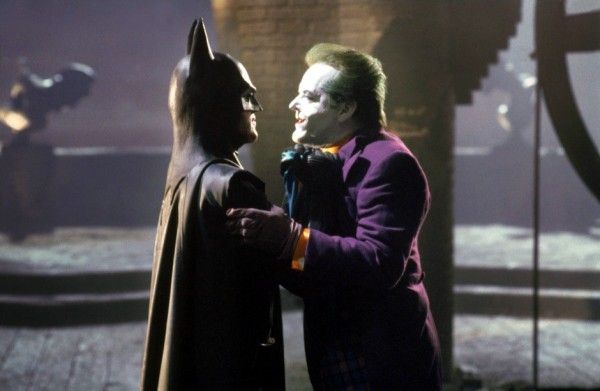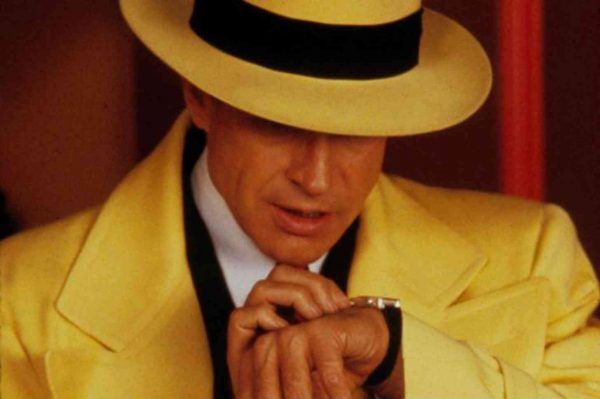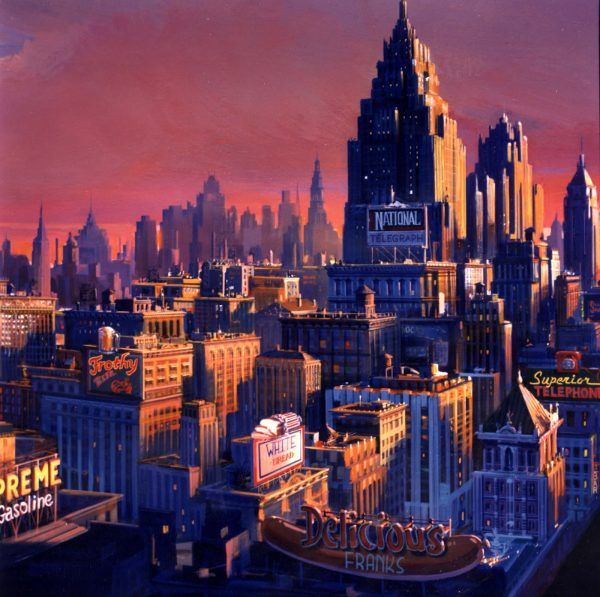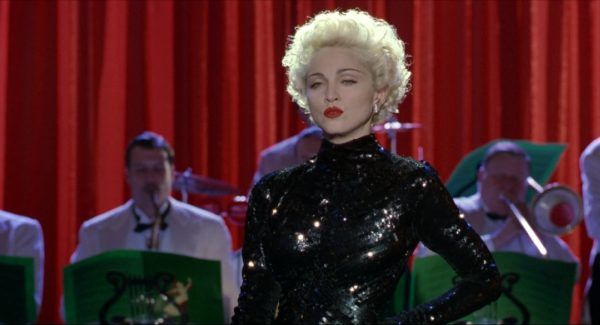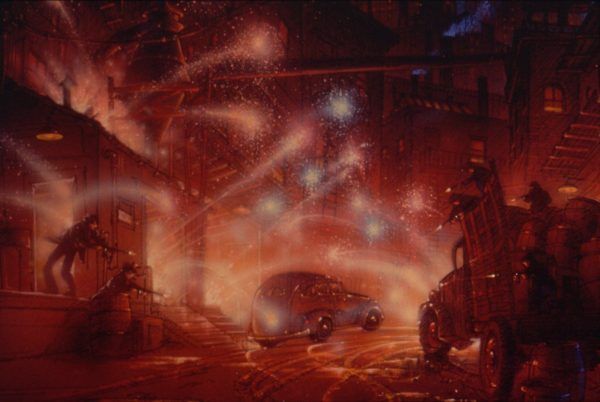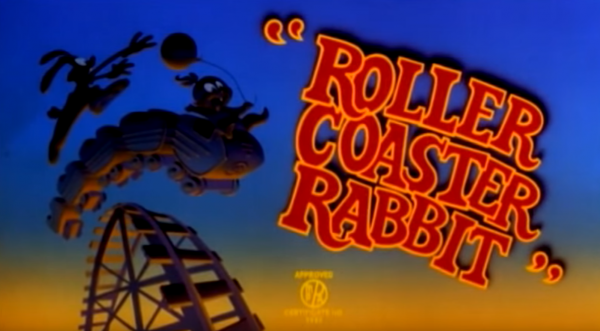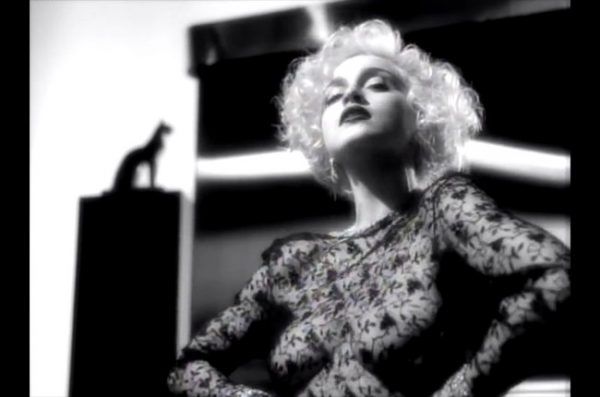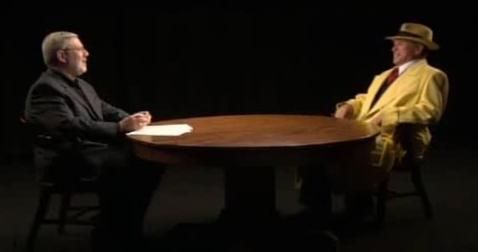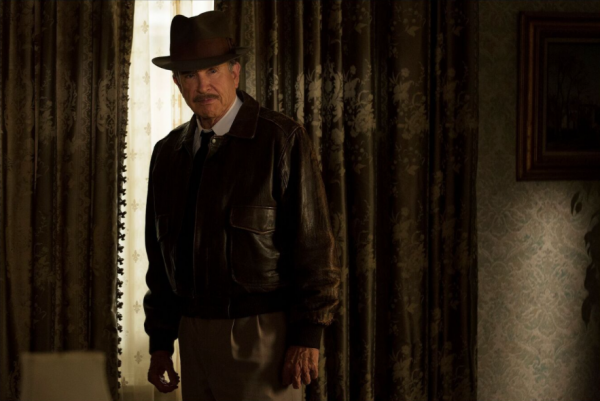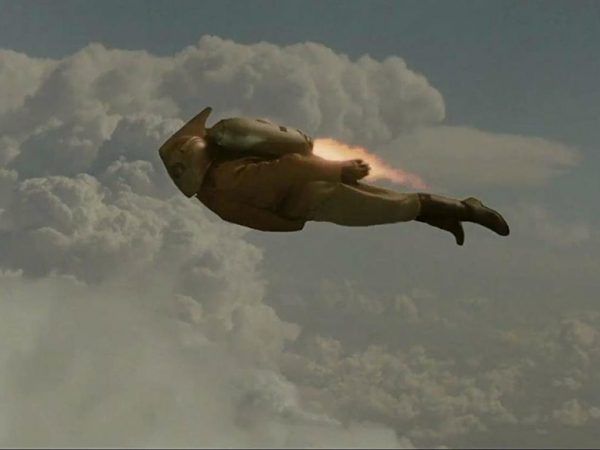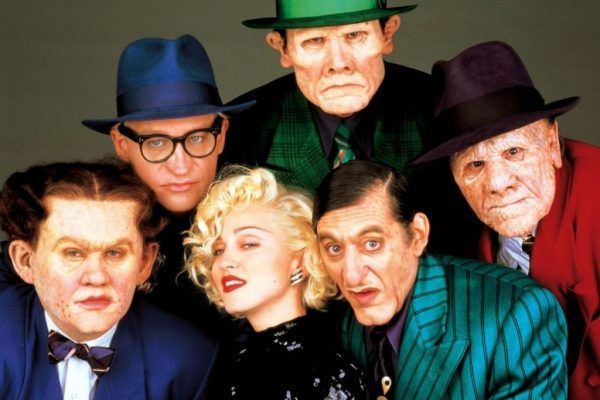“We found ourselves attracting the caliber of talent with which ‘event’ movies could be made. And, more and more, we began making them. The result: costs have escalated, profitability has slipped and our level of risk has compounded,” Disney executive Jeffrey Katzenberg wrote in January 1991. “The time has come to get back to our roots.”
This assertation was part of a larger memo, dubbed “The World is Changing: Some Thoughts on Our Business” and distributed to key Disney executives like Michael Eisner, Frank Wells, Dick Cook and the “creative staff” of live-action Disney shingles Hollywood and Touchstone. While the memo claims that its creation was inspired by many issues plaguing the industry, namely a lackluster Christmas 1990 season which saw the release of such costly misfires as Brian De Palma’s The Bonfire of the Vanities and Francis Ford Coppola’s The Godfather, Part III, it was clear that the note was mainly inspired by Disney’s biggest hope (and biggest regret) of 1990: Warren Beatty’s Dick Tracy.
Katzenberg bemoaned what he saw as a big-budget arms race that was plaguing Hollywood. “Here at Disney, our biggest effort to compete in blockbuster terms, Dick Tracy, is a case in point as to how the box office mentality is affecting the moviegoing experience,” Katzenberg wrote. “Dick Tracy was in the works for nearly ten years. But by the time it was ready for release, we were upon the summer of 1990 and we knew that its success would be for the most part judged by its opening weekend box office performance. So, we did everything that we could in order to get the film the audience and recognition we felt it deserved, including the unheard-of notion of clothing our opening night audience.”
That last part was a reference to a ploy by Disney to sell limited edition T-shirts that would act as your “ticket” to special midnight screenings of Dick Tracy. “I was there first,” the T-shirts read, emblazoned with the outline of Dick Tracy talking into his wrist watch/phone, like he was responding to a very important alert (there are a ton still available on sites like eBay). But according to an LA Times report on the stunt, the rollout of this initiative was chaotic and messy, with some theaters selling a ton of the T-shirts while others hardly sold any. (The same article states that after an enthusiastic exhibitor screening one chain of theaters had committed to showing the movie for 20 weeks – well into November.) According to the LA Times, it was an attempt by Disney to replicate the Batman logo T-shirt craze (it became “Kitsch of the Year in 1989”) for summer 1990.
“The result was a film that did very well, a film we were rightly proud of, a film that was critically acclaimed… and a film that is still being savagely disparaged as having failed to achieve Batman-like success at the box office,” Katzenberg said. And he was right – the movie was the 9th highest grossing movie at the domestic box office in 1990 (12th at the international box office) and was warmly received by some critics (in his four star review Roger Ebert said it was “one of the most original and visionary fantasies I've seen on a screen,” Gene Siskel disagreed). A few weeks after Katzenberg sent his memo, the film would be nominated for seven Academy Awards (it won three). But the truth was undeniable – Dick Tracy failed to capture the zeitgeist in the way Batman had.
It was also a huge pain in the ass.
“It was perfectly reasonable to ask whether the rewards were worth the enormous effort expended on the project,” Michael Eisner wrote in his memoir Work in Progress (co-written with Art of the Deal ghostwriter Tony Schwartz). Eisner also quoted then-head of publicity Terry Press, who said at the time of the movie’s release: “We got into the movie star business and we tried to create a phenomenon. Making that kind of big blockbuster film is not what we do very well or feel comfortable doing.” Disney’s other big movie of 1990 was Pretty Woman, a modestly budgeted romantic comedy Eisner described as “a modern Doris Day movie.”
On its 30th anniversary, it’s worth looking back on the making of Dick Tracy, the response the film garnered, and its unique, lasting impact.
A film version of Dick Tracy, based on the popular newspaper strip created by Chester Gould back in in 1931, had been attempted since at least 1975, when producer Michael Laughlin secured the rights. Beatty, then 38, was already interested. By 1977 it had changed hands to producer Art Linson and director Floyd Mutrux, who brought the project to Paramount, where both Eisner and Katzenberg were stationed. Paramount brought on Universal to co-produce and, after attempting to woo Steven Spielberg, Universal installed John Landis as director and hired screenwriters Jim Cash and Jack Epps, Jr. (Miraculously, the screenwriters retained final credit when the movie was eventually released.) Landis stepped away after the catastrophic accident on the set of Twilight Zone: The Movie resulted in the death of Vic Morrow and two young actors (and a murder charge for Landis). After Landis left, two-fisted American auteur Walter Hill came aboard with super-producer Joel Silver. Together they got Beatty attached. But according to a Newsweek profile by David Ansen written around the time of the movie, “Hill wanted to go a realistic, gritty route, while Beatty envisioned a stylized, comic-strip movie that would re-create his childhood first impressions of the strip.” Beatty, being a self-starter, simply purchased the rights to the strip for himself in 1985, along with Epps and Cash’s screenplay that had been around since Linson’s attempt with Landis.
Beatty set about to tailor Dick Tracy to his sensibilities, rewriting most of the dialogue with One Flew Over the Cuckoo’s Nest screenwriter Bo Goldman (they lost Writers Guild arbitration and didn’t end up with final credit) and later incorporating elements from the official novelization, written by Max Allan Collins. With Beatty formally attached as director, he went to Disney in 1987. Eisner, who had shepherded the difficult production of expensive passion project Reds at Paramount, had dealt with Beatty before. Reds had won Beatty the Best Director Oscar and the film had been nominated for Best Picture, and Eisner knew what he was getting into. So did Wells, who while at Warner Bros. battled Beatty on Heaven Can Wait (Beatty eventually took the project to Paramount). Both executives had been shaken up by their experiences with Beatty, but looking at the cultural landscape, with virtually every other studio quickly establishing name-brand series, they didn’t have much choice. Eisner, who while at Paramount green lit Raiders of the Lost Ark knowing that it would be the first of many, understood that Disney needed its own powerhouse franchise. Dick Tracy could be it.
Hammering out the deal that got the project into production was difficult and time-consuming. According to Kim Masters’ Keys to the Kingdom, Beatty would be paid $9 million to star, direct, produce and rewrite the film. He’d get a cut of the merchandise sales (which were projected to be astronomical) and 15% of the top gross. He also agreed to pay for any budgetary overages out of his salary. (Katzenberg demanded that the budget stay at $25 million.) Eisner, Wells and Katzenberg were happy – they were going to get a potentially lucrative franchise, headlined and directed by one of the biggest actor/filmmakers in the world, and they’d even gotten him to pay for it should it go over.
Beatty, an endless tinkerer and perfectionist, boldly decided that the movie would look like a living comic strip. Audiences would only ever see seven colors – all the same shade (including the banana yellow trench coat and hat of the titular superstar detective). And the backgrounds, instead of striving for realism, would be impressionistic matte paintings by the great Harrison Ellenshaw, whose father, Peter Ellenshaw, did the matte paintings for Walt Disney’s Mary Poppins. Cinematographer Vittorio Storaro, a frequent Beatty confederate, vowed to never move the camera. They wanted to having everything happen inside the frame, just like the action happening within a comic book panel. The make-up effects were equally exaggerated and extreme. These were not the gangsters you were used to seeing in gritty crime dramas. Instead, they were cartoonishly disfigured and deformed.
As clear and direct as Beatty’s vision was, problems arose almost immediately. Three weeks into production, Beatty fired Sean Young, who was hired to play Tracy’s girlfriend, Tess Trueheart. Most concede that Young, who as notoriously unpredictable, was actually well-behaved on set, she just wasn’t working as the character. (She was replaced with Glenne Headly.) Beatty was also in a supposedly serious relationship one of the movie’s stars, Madonna, who agreed to work for scale just to be a part of the production. But Beatty continued to sleep around. Masters recounts how he would often lock himself in the editing bay with his latest conquest, leaving several crewmembers to wait outside until he was, er, finished. Beatty would then walk out as if nothing had happened.
Masters claims the final budget was $47 million, significantly more than the $25 million Katzenberg, Wells, Eisner and Beatty had agreed on. But in his memoir, Eisner said, “We managed to earn a significant profit with Dick Tracy – in part because it was so well produced by Warren and in part because we supported it with such a massive marketing campaign.”
One thing is for sure – the “massive marketing campaign” Eisner spoke of was inescapable (it cost a reported $54 million). There was an MTV promotion called Be Dick Tracy that required you to call a 900 number (95-cents each call). Winners would receive Dick Tracy’s “trademark coat and fedora,” the “famous wrist radio,” Tracy’s “vintage sedan” and a “sleek speedster” confiscated by Madonna’s character, Breathless Mahoney plus a spot at the movie’s premiere, at what was then known as Disney-MGM Studios in Florida. (More on that in a minute.) You’d also get $15,000. There was also a Dick Tracy’s Crimestopper Game at McDonald’s that promised $40 million in prizes to go along with the accompanying Happy Meal toys and collectible Coca-Cola cups. Madonna, then on her Blonde Ambition tour, had a Dick Tracy-themed number, complete with back-up dancers in yellow overcoats. She would put out an entire album, I’m Breathless, one of three tie-in albums connected to Dick Tracy (the others were the score by Batman composer Danny Elfman and an “inspired by” soundtrack featuring Ice-T, k.d. lang, Erasure and Jerry Lee Lewis). A live stage show called Dick Tracy Starring in Diamond Double-Cross performed in the months before the film’s release at Disneyland and Walt Disney World, serving as the proper introduction of the character in the parks. After the show, you could get photos with the walk-around versions of the characters.
And there was so much merchandise.
“The wheels are all in motion for Dick Tracy to be this year’s Batman, but my gut feeling is that won’t happen,” said Larry Carlat, editor of Toy & Hobby World, the New York trade publication, said a few months before Dick Tracy premiered. C. Michael Jacobi, vice president of marketing and sales at Timex Corp, is quoted in the same New Yoork Times article, wondering if there will be a second wave of orders for their Dicky Tracy-branded watches. ““Everything hinges on how well the movie goes,” Jacobi said. (The original watch, with Disney’s iconic Dick Tracy logo, was sold for $29.99 in 1990. You can buy one on eBay, right now, for $32.99.) Licensees, burned by their slow response to Batman merchandise, were quick to jump on Dick Tracy. Disney executives told the New York Times that “more than 600 different Dick Tracy. products being made and sold under license by other companies.” There were videogames for virtually every console and “$300 pajamas” (according to Newsweek) and rubbery action figures of all the grotesque villains. My most sought-after item: a pair of the Dick Tracy slip-ons that Vans made.
Disney, too, got in on the act, pulling its usual levers. There were stores at the theme parks “selling nothing but Tracy-related merchandise” (according to the New York Times) and even more sold at the Disney Store, then at the peak of its suburban mall-invading powers. The company made just as much product for the movie as the licensees.
Walt Disney Imagineering, the secretive Disney unit responsible for the theme park attractions, also had designs on the property. Dick Tracy’s Crimestoppers was going to kill. “The concept was way ahead of its time because it married interactivity and targeting with a thrilling and unpredictable ride system,” said Kevin Rafferty, the Imagineer behind the project, in his recent memoir Magic Journeys. “Designed to look like 1930s-style gangster cars,” the ride vehicles were going to be the next-gen “enhanced motion vehicles,” essentially wedding the flight simulator technology of Star Tours to the traditional dark-ride experience of something like The Haunted Mansion. (The technology would eventually be used on the Indiana Jones Adventure in California and Japan and Dinosaur in Florida.) But in this iteration, there would also be an interactive element – instead of hitting humans, you would aim for “crates, barrels, flowerpots and other things that would react and animate with a shooting gallery-like gag.” Points would be awarded to guests based on what they hit, with everybody in the car competing against one another. “The whole thing seemed way too big and impossible, but I learned that was the kind of stuff Michael Eisner loved,” Rafferty said in the memoir.
They had mocked up some of the street scenes at the R&D warehouse in Tujunga and Imagineering purchased a 1931 sedan to stand in for the eventual attraction vehicle. Eisner visited and Imagineer Chris Brown drove them around the mock-up. The warehouse “was beautifully staged, scenically painted, propped-out and theatrical lit as if it were a real section of the proposed attraction” (according to Rafferty). It was also a hit. “If the mock-up is this much fun, I thought, the real deal is going to be phenomenal,” Rafferty said. Disney historian Jim Hill told me that executives from the Oriental Land Company, the company that owns and operates the Tokyo Disneyland resort, came to the warehouse and tested it out as well. Not only did the executives love it but their wives did too; nothing like a tiny Japanese woman hanging out of an old car window firing an imaginary machine gun.
Like most things associated with Dick Tracy, Crimestoppers seemed like a sure thing. In fact, in 1990, a TV special aired called The Disneyland Story, hosted by the late, great Harry Anderson. It was mostly a historical look back at the history of Disneyland (complete, for some reason, with music from Back to the Future). In the final moments of the special, Anderson promised a “peek into the future.” It was then that the Disney Decade, Eisner’s ambitious plan to rejuvenate and enhance all of the theme parks, was publicly detailed for Disneyland. “1996! Dick Tracy’s Crimestoppers, combining state-of-the-art technology with a classic story from the past,” Anderson enthusiastically exclaims. It was coming. Dick Tracy was here to stay.
Disney kept pushing. They lined up an all-new Roger Rabbit short, “Roller Coaster Rabbit,” to premiere in front of Dick Tracy. Who Framed Roger Rabbit was the second most popular movie of 1988 and Disney’s biggest hit from that year, but the decision to put the short in front of Dick Tracy put strain on an already delicate relationship between Disney and producer Steven Spielberg. Spielberg wanted the short to play in front his “thrillomedy” Arachnophobia, the first film from Disney’s Hollywood Pictures label, set to open later that summer. Disney wouldn’t budge and the decision would permanently damage the relationship between Disney and Spielberg and prematurely put an end to the franchise.
The premiere for the movie was held at Walt Disney World’s Pleasure Island nighttime dining and entertainment complex, at a sleek AMC. A staggering number of the movie’s stars, including Beatty, Dustin Hoffman, Headly, Seymour Cassel and Paul Sorvino were in attendance. (Only Al Pacino, who was shooting a movie at the time, and Madonna, who said she had a cold, weren’t there.) After the screening, the stars were taken by limousine to Disney-MGM Studios, where they appeared in a parade down Hollywood Boulevard, driven up too the mock Chinese Theatre. There, the stars put their hands in wet cement. “For a night, Orlando was Hollywood East,” the Orlando Sentinel wrote. What the Orlando Sentinel didn’t write about was a last-minute meltdown, chronicled in Masters’ book, that happened in the lobby of the just-opened Dolphin Hotel (designed by Eisner’s favorite architect Michael Graves) over Beatty’s haphazard decision to award Goldman a co-producer credit. The WGA, who had failed to award Goldman a writing credit, called the producer credit an unlawful “consolation credit” and threatened to block screenings of the film if Goldman’s name was in the credits. Unsure of what to do, Disney agreed to pay a fine for the Florida premiere and destroy the offending print after the screening was over.
For the notoriously press-shy Beatty the run-up to the movie must have been agony. Watching the press tour, it certainly seemed torturous for the actor, as he appeared in magazine profiles (like the one in Newsweek) and late-night talk shows through gritted teeth. (A particularly contentious interview with Barbara Walters bordered on performance art.) In the opinion pages of the New York Times, back when it wasn’t a hotbed for hate speech, columnist Ann Quindlen wrote: “I stayed up to watch Warren Beatty on Larry King's cable call-in show. There was something sort of pathetic about it. Warren Beatty used to refuse to do this. He would not shill. Now he's shilling up a storm.” Oof. Additionally, a half-hour prime time TV special, Dick Tracy: Behind the Badge, Behind the Scenes, aired on television. The blitz never stopped, never even wavered.
Here’s the thing – it worked. Sort of.
According to the Newsweek report, “an astonishing 100 percent of the moviegoing public was aware of the existence of this movie before it opened.” That is insane and completely unheard of. Its $22.5 million opening weekend was the biggest in Disney history, but compared with Batman’s $42.7 inaugural haul, it was a disappointment (sorry Katzenberg). After the box office numbers were announced, Disney stock prices dropped by almost $5 a share (they quickly rebounded). “'We're ecstatic at this point,'' said Bob Levin, then president of worldwide marketing for Disney, told the New York Times. ''Contrary to what has been reported, we never had any expectation of a Batman kind of opening. That was unprecedented and nothing we thought we would match.'' I’m Breathless (which included one of the songs Stephen Sondheim wrote for the movie) remained on the charts for 25 weeks and was certified double-platinum. Most of the reviews were warm, but many referenced the swirl of publicity and pre-release buzz in their write-ups. Owen Gliberman, in his review for Entertainment Weekly, said, “Beatty looks as if he’s still hiding out from Barbara Walters.” Many compared the movie to Batman.
The Herculean effort Disney had launched to get Dick Tracy off the ground had paid off, but not in the way that the company had hoped for. For this much blood, sweat, and tears, they needed a sensation. Instead, they got a mild hit. An unnamed executive told Masters: “Dick Tracy drained the entire company. You could feel the weight of the entire company pushing this thing forward. Everybody was completely exhausted on the other side of it.”
Dick Tracy quietly faded from memory. (Full disclosure: in the fall of 1990 I dressed as Dick Tracy for Halloween – yellow overcoat, hat, the whole thing.) The VHS tape was on sale in time for the holidays but wasn’t exactly the season’s must-have gift. James B. Stewart matter-of-factly wrote in Disney War: “Thoughts of turning Dick Tracy into an Indiana Jones-style franchise evaporated.”
The musical stage show, while popular, quickly left the park. And plans for Dick Tracy’s Crimestoppers, despite being publicly announced by one of the stars of Night Court, soon faltered. “Requiring a show-controlled facility big enough to house a city, the attraction ended up being just too big and expensive to justify,” Rafferty says in the book. “I totally understand why it got shut down.” The failure of the film arguably had more to do with the cancellation of the attraction, as similar ride technology was adapted for the Indiana Jones and the shooting mechanic (initially developed for an attraction based on Alien) was softened for Buzz Lightyear’s Space Ranger Spin (based on the lucrative Toy Story franchise). The Japanese executives from the Oriental Land Company might have loved it, but they chose not to build it for Tokyo Disneyland either.
At the 63rd annual Academy Awards, held on March 25, 1991, Dick Tracy won three Oscars: one for Richard Sylbert’s eye-popping production design, another for John Caglione Jr. and Doug Drexler’s equally incredible make-up and a third for Stephen Sondheim’s “Sooner or Later (I Always Get My Man)” for Best Original Song. (Madonna was on hand to perform it live.) It was nominated for seven awards total including, unfathomably, Al Pacino for Best Supporting Actor, and until Black Panther also took home three Oscars, was the most-awarded comic book movie at the Oscars ever.
And the case seemed to be closed for Dick Tracy, for a while at least. Over the years though, Dick Tracy would return.
Arguably the movie’s most lasting impact has come in the form of “Vogue.” Few remember that the Madonna classic, with its equally unforgettable David Fincher-directed music video, actually came from the I’m Breathless tie-in album. Originally intended as a B-side for “Keep It Together” (the final single from Like A Prayer), Madonna and the record label decided that it would work better as its own single. (“Cherish” wound up being the B-side for “Keep It Together.”) When it was decided that “Vogue” would accompany the Dick Tracy soundtrack, Madonna reportedly re-wrote some of the more risqué lyrics, understanding the Disney connection would be strong. Since the song was released, Madonna has performed it on six tours, on the MTV Video Music Awards (just a few months after the release of Dick Tracy) and during the Halftime Show during Super Bowl XLVI in 2012. More recently, after the quarantine was put into effect, a barely recognizable Madonna released a weird video on social media where she’s stumbling around her bathroom, singing into a microphone and singing “Vogue” but with the lyrics changed to her experience at the supermarket. “"C'mon, go, let's go eat some fried fish (fried fish)," Madonna warbled into a hairbrush. It is haunting.
In 2002, a prolonged legal battle began between the Tribune Company and Warren Beatty over the rights of the character. When Tribune tried to gain the rights to the character back in 2002, Beatty struck back, arguing that Tribune had “clouded the rights” and made it “commercially impossible” for him to make another film. A judge in 2005 gave him the go-ahead to sue Tribune for $30 million in damages. By March 2009, Tribune was suing Beatty, this time stating that Beatty had “made no productive use” of the character since the 1990 feature. Tribune, which was going through a costly and protracted bankruptcy, said that the money could be worth tens of millions of dollars, potentially helping to stabilize the brand and pay back creditors. While Beatty had said that he had begun work on a TV special, Tribune asserted that “the TV special being produced solely for the purpose of preserving Beatty’s rights would not benefit either party, and that it does not believe Beatty has begun shooting the special in the manner that would be required under their agreement.”
In March 2011, a judge ruled in favor of Beatty. He could keep the rights to Dick Tracy. When the AV Club wrote up the ruling (while poking fun at Beatty for retaining the rights while not actually doing anything with the character) they described a TV special “he supposedly filmed has never seen the light of day” as the reason for the ruling. But here’s the thing – he did film the TV special. It aired in 2010, less than a year before the ruling was handed down. And it is one of the weirdest things you’ll ever see.
Known only as The Dick Tracy Special, it aired (once) on TCM. It was hosted by film historian Leonard Maltin and was shot, in part, at Disney Studios in Burbank (near where the film was lensed ten years earlier) and the Walt Disney Imagineering campus in Glendale by Oscar-winning cinematographer Emmanuel Lubeszki (yes seriously). Its bizarre plot, as much as there is one, follows Beatty-as-Tracy (in the trademark yellow overcoat and fedora, black suit, and signature gait) sitting down with Maltin as he talks about other actors who have played him over the years. It’s incredibly strange, with Beatty (who was then 73) ad-libbing and generally hamming it up in a way that feels like he’s still committed to the character but also that he is just trying to get this done to retain the rights to a potentially lucrative franchise.
A few years ago I talked to Leonard Maltin about his experience on the special. “He said that he wanted to reassert and reaffirm his rights to the character of Dick Tracy and that he decided that one means of doing that was to do a little special featuring the character,” Maltin told me. He said that Beatty was just as exacting as he’s been made out to be, requiring multiple takes of even the simplest shot (“hearing about it and experiencing it are two different things”) and that the actor/filmmaker has always been thankful about his involvement in the special. “I see him at functions from time to time. He couldn’t be friendlier. He continually thinks me for my participation in the show and I continue to be flattered that he asked me,” Maltin said. When I asked him if anybody else has ever brought this special up to him, he said, curtly, “No.” Maltin said that Beatty seemed serious about bringing the character back, not with him portraying the detective but producing and potentially directing a new actor in the role. So that means the last time Beatty played the character was in a little-seen, all-but-forgotten TV special.
In 2016, though, Beatty said that he still wanted to make a sequel to the movie. “I’m serious about it, but I am slow about these things,” Beatty told Variety. Since then, there has been no word about the follow-up project – no casting, no crewmember announcements, nothing. That isn’t exactly surprising considering the long and tortured production of Rules Don’t Apply, Beatty’s Howard Hughes film that he had wanted to make for over a decade and, when it was finally released in 2016, was resoundingly ignored. (In a damning account in Variety, the film was rightfully described it as “one of the biggest flops in recent memory.”) Beatty is now 83. It does not feel like he’ll wind up making a Dick Tracy sequel after all.
The legacy continues, however unlikely.
On the same weekend in April 2020, there was a surprisingly large amount of Dick Tracy visibility: on one of the at-home episodes of Saturday Night Live, cast member Heidi Gardner was seen sporting a T-shirt from the movie, showcasing all of the crazy villains. The next night, Take Me to the World: A Sondheim 90th Birthday Celebration, a technologically plagued tribute to the songwriter was held online. And Judy Kuhn (the singing voice of Pocahontas, if you’re playing Disney bingo at home) performed "What Can You Lose" from Dick Tracy. In 1992 two of the songs from the movie (“Back in Business” and “Sooner or Later”) appeared in a British production of Sondheim revue Putting It Together, with two more songs from the film added to the Broadway production in 1999. Still, that is more than 20 years ago. For it to make it into a birthday celebration, given the breadth and volume of his output, is pretty cool. Also, Kuhn totally killed it.
Also, it cannot be overstated how ahead of its time Dick Tracy was in terms of its aesthetic and approach to recreating its source material. Its “living comic book” atmosphere, which wasn’t just an attempt to Xerox the look of a comic book but to also mimic the feeling of reading a comic book – scanning from panel to panel, intercutting between two sets of action, and filling the frame with larger-than-life characters that you could only find in a funny book. Since 1990, only two films have really tried to replicate this sensation – Ang Lee’s divisive live-action Hulk and 2018’s widely acclaimed animated film Spider-Man: Into the Spider-Verse. It says something about just how visionary Warren Beatty were that only two films have come close to doing what Dick Tracy did, with much more modern technology. Sometimes it’s hard to be a trailblazer.
“It seems that, like lemmings, we are all racing faster and faster into the sea, each of us trying to outrun and outspend and out-earn the other in a mad sprint toward the mirage of making the next blockbuster,” Katzenberg wrote in his state-of-the-industry memo. He was aiming for reflection and recalibration. Dick Tracy was a costly fluke, something that the studio would never repeat. They would learn from the experience. Except that they learned nothing. Six months after he sent the memo, Disney released The Rocketeer. With its period setting, pulpy vibe and hugely expensive price tag (more than $40 million), The Rocketeer felt very much like the spiritual successor to Dick Tracy. Sure, it wasn’t made or populated by egotistical screen legends and the source material was an edgy 1980s comic book that was just mimicking the style of the 1940s heroes, giving it a contemporary advantage. But still. It was an expensive gamble on remarkably similar material and yet another attempt by Disney to compete with the franchises established at other studios. It didn’t work in 1990 and it didn’t work a year later.
Disney would obviously find success in the formula they attempted with Dick Tracy many years later in the films that make up the Marvel Cinematic Universe and things like The Incredibles, both of which artfully mixed classic comic book aesthetics with modern storytelling technology. The marketing and merchandising onslaught, which seemed pioneering for Dick Tracy, is now part of the course for any Disney movie these days. In a weird way Dick Tracy was a dry run, years earlier, for the success they would enjoy later.
There’s an argument that could be made that because so much Dick Tracy stuff was produced in 1990, much of it is still around, generating continued interest all these years later. (As Stewart said, ““Merchandise tie-ins languished mostly unsold.”) Online auctions, thrift shops and second-hand stores are still flooded with merchandise and promotional tie-ins. Its colorful characters and timeless designs still attract people who are struck by nostalgia or simply intrigued by the movie’s singularly strange (and seductive) world. Plus, a lot of the merchandise featured Madonna’s likeness, which has never gone out of style or gotten old. At the time the Dick Tracy merchandise machine seemed excessive and unnecessary. In the years since, that same merchandise has proven essential to the film’s longevity.
Dick Tracy has been a part of the cultural conversation, in fits and starts, for the last 30 years, even without any spin-offs, sequels, or television series (like Batman). Its primary-colored legacy endured because of the strength (and strangeness) of a single film and a whole bunch of kitschy merchandise. In this day and age, where every major studio production has to be slotted into a larger cinematic universe, that’s pretty profound. But then again, Dick Tracy never did play by the rules.

